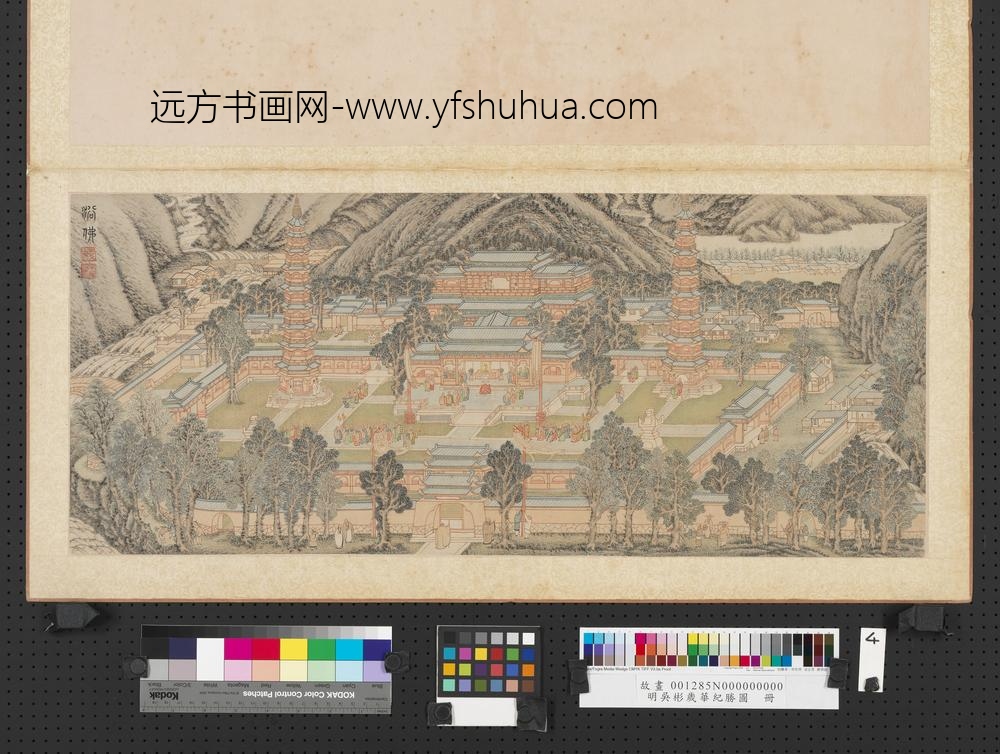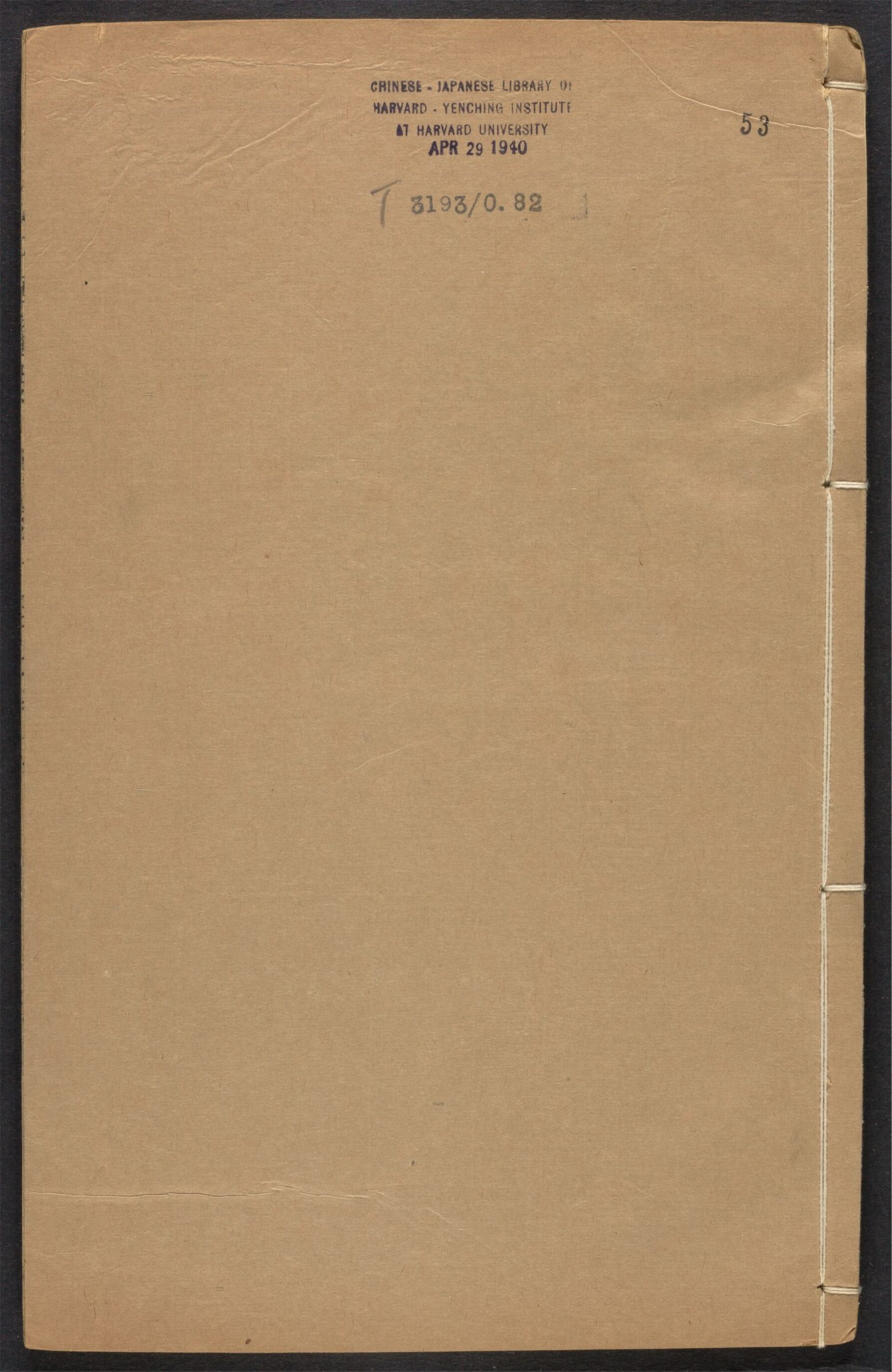【作品基本信息】
| 作者 | 吴彬 |
| 品名 | 岁华纪胜图册-浴佛 |
| 朝代 | 明朝 |
| 文件大小 | 18.01MB |
| 分辨率(DPI) | 300×300 |
| 像素大小 | 2822×2128 |
| 尺寸(CM) | 23.89×18.01 |
| 作品数量 | 1 |
| 作品收藏 | 台北故宫博物院 |
| 图片格式 | 默认提供TIF和JPG两个版本 |
基本数据
| 藏品类型 | 绘画 |
| 品名 | 明吴彬岁华纪胜图 册 浴佛 Selections from A Record of Yearly Observances: Bathing the Buddha |
| 分类 | 绘画 |
| 作者 | 吴彬;Wu Bin |
| 数量 | 一幅 |
典藏尺寸
| 【位置】 | 【尺寸】(公分) |
| 本幅 | 29.4×69.8 |
质地
| 【质地位置】 | 【质地】 |
| 本幅 | 纸 |
题跋数据
| 【题跋类别】 | 【作者】 | 【位置】 | 【款识】 | 【书体】 | 【全文】 |
| 作者款识 | 吴彬 | 本幅 | 浴佛 | 篆书 | |
| 印记: 吴文中氏、吴彬之印 |
|||||
印记资料
| 【印记类别】 | 【印记】 |
主题
| 【主题类别】 | 【主题(第一层)】 | 【主题(第二层)】 | 【主题说明】 |
| 主要主题 | 山水 | 夏景 | 初夏(四月八日) |
| 其他主题 | 山水 | 山径 | |
| 其他主题 | 山水 | 溪涧、湍泉 | 溪涧 |
| 其他主题 | 人物 | 行旅 | |
| 其他主题 | 人物 | 百姓 | |
| 其他主题 | 佛道人物 | 僧(和尚、尼姑) | 和尚 |
| 其他主题 | 树木 | ||
| 其他主题 | 树木 | 松 | |
| 其他主题 | 树木 | 柏 | |
| 其他主题 | 建筑 | 房舍 | |
| 主要主题 | 建筑 | 寺庙 | |
| 主要主题 | 建筑 | 塔 | |
| 其他主题 | 建筑 | 水利 | |
| 其他主题 | 建筑 | 篱笆、围墙 | 围墙 |
| 主要主题 | 节令与二十四节气 | 浴佛 | |
| 其他主题 | 器用 | 宗教器用 | 幡 |
技法
| 【技法】 | 【技法细目】 |
| 工笔 | |
| 界画 | |
| 皴法 | |
| 人物衣纹描法(匀称线条) | |
| 苔点 |
参考数据
| 【类别】 | 【参考数据】 |
| 收藏着录 | 石渠宝笈续编(干清宫),第一册,页433 |
| 收藏着录 | 故宫书画录(卷六),第四册,页63 |
| 内容简介(中文) | 吴彬,活动于明万历十九年(一五九一)至崇祯十六年间(一六四三),福建莆田人,流寓南京,后以善画,被召为中书舍人,深获神宗赏赐。曾远游西蜀,目睹剑门、峨嵋、岷山诸大山川之雄奇。中晚期以后山水画多以夸张和变形的手法,强调山峦峻削雄伟之感。 本册共十二幅,描绘各月份的节庆活动。本次选展二幅:「结夏」以界画楼阁庭院,曲桥荷塘,作斜向构图,人物画法一致,但各具情态。「浴佛」画寺庙依山傍水而筑,与自然环境融揉一片。两幅描绘俱精致而饶古趣。 |
| 内容简介(英文) | Exhibited here are two of the twelve leaves of the album A Record of Yearly Observances, which depicts the festivals of each month of the year. These two carefully executed outline-paintings, The End of Summer and Bathing the Buddha, have a slightly archaic air. Wu Pin was a native of P’u-t’ien, Fukien, but spent most of his life in Chin-ling (modern Nanking). His artistic talents brought him a position in the Secretariat, and his works were much admired by the emperor Shen-tsung (r. 1573-1620). Wu Pin traveled to western Szechwan, where he visited the unusual scenery of Mount Omei, Sword-pass Mountain, and Mount Min. His later landscapes, equally unusual, depict awesomely precipitous mountain ranges modeled in an exaggerated, somewhat surrealistic style. |
| 内容简介(中文) | 吴彬,万历间(公元一五七三至一六一九年)以书画闻名于世。福建莆田人,流寓金陵(今南京)。字文仲,所绘佛像人物,形状奇特,不同于前人,自成一家。山水画布置亦极新奇而不摹古。 本幅为「岁华纪胜图册」之第四开,画四月景。四月八日为佛诞。据闻释迦牟尼出生时,诸天群集,以香水敬沐世尊,故佛诞又称浴佛节。本作采俯瞰式构图,院中僧侣群集,参礼佛像。寺塔重重,井然有序。瓦瓴、屋脊、石阶等皆用界,线条简洁有力,建筑结构清晰可辨。 |
| 内容简介(英文) | Wu Pin, excelling in calligraphy and painting, was a native of P’u-t’ien, Fukien, but settled in Nanking. His style name was Wen-chung. He painted Buddhist images and figures in an unusual style, completely different from his predecessors. His landscape compositions were also different from the ordinary. He eschewed copying ancient manners. The fourth leaf of the album “Scenes of the Twelve Months”, this painting represents a scene of the fourth lunar month. The eighth day of the fourth lunar month was the birthday of the historical Buddha Śākyamuni. It is said that after the Buddha was born, celestial beings gathered and washed the Buddha with fragrant water. As a result, the birthday of Śākyamuni is also called the Buddha-washing Festival. The leaf depicts a scene from high above in which many monks assemble in a Buddhist monastery in order to pay homage to a Buddha statue. Layers of buildings are well organized. Roof tiles, ridges of roofs, and stone steps are all drawn with a ruler. Ruled lines are simple and forceful. The structures of the buildings are portrayed in a clear manner. |
| 收藏着录 | 故宫书画图录,第二十三册,页70-75 |
| 内容简介(中文) | 此册描写一年十二胜景,于篆书标题下皆有吴彬钤印。前期展出元夜、秋千、蚕市、浴佛、端阳、结夏等六幅。画中景物细腻生动,山林造型奇特、设色淡雅,显出纤丽巧态。以时序活动为主题,构景多描绘江南景观。如元夜景中有城墙、门楼、鳌山灯等,与南京城景关系密切。另如寺院浴佛、宅院置冰,也与明人生活逸事呼应。画中讲究远景配置,凸显辽阔景致,兼具月令岁时与佳景记胜特色。 (20121018) |
| 内容简介(英文) | This album includes beautiful scenes associated with each of the twelve lunar months. Below the titles in seal script are impressions of Wu Bin’s seals. The first part of the exhibit presents six paintings for the first half of the year: the Lantern Festival, playing on a swing, the silk market, bathing the Buddha, the Dragon Boat Festival, and the end of summer. The scenery in the paintings is delicate and animated, the mountain forests unusual in form with coloring light and elegant, reflecting fine beauty and a skillful manner. The themes are arranged chronologically against the backdrops of Jiangnan scenery. The Lantern Festival, for example, features scenery associated with a city wall, gateway, and ornamental “lantern mountain,” which are closely related to the city of Nanjing at the time. In addition, the bathing of the Buddha at a temple and the storage of ice at a courtyard also correspond to anecdotes in Ming dynasty life. The emphasis placed on distant scenery creates an expansive effect, combining records of the year with beautiful scenery. (20121018) |
| 参考书目 | 何传馨,〈明吴彬岁华纪胜图 册 浴佛〉,收入《状奇怪非人间-吴彬的绘画世界》(台北:国立故宫博物院,2012.10),页104-163、218-219。 |
【作品展示】

明吴彬岁华纪胜图册浴佛




